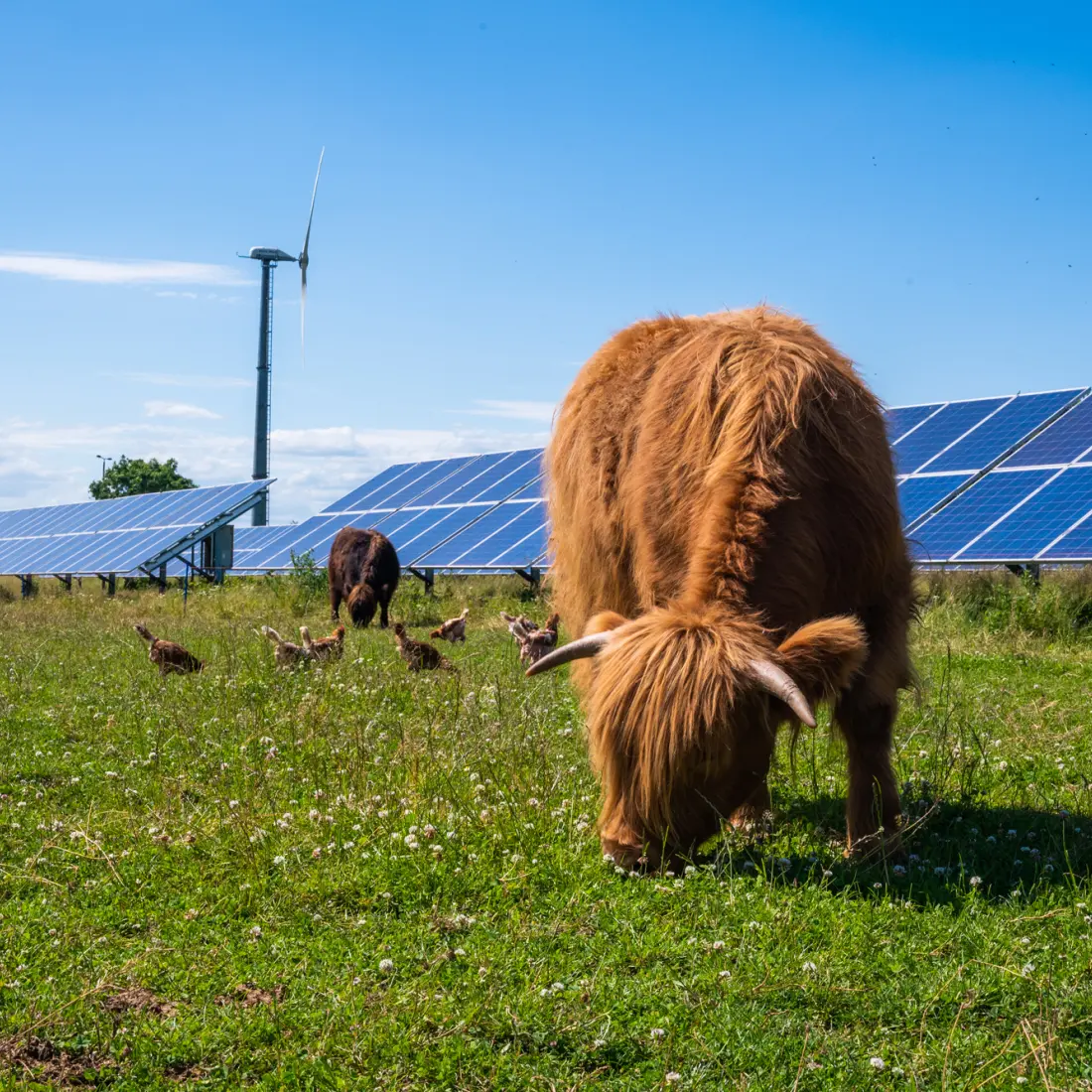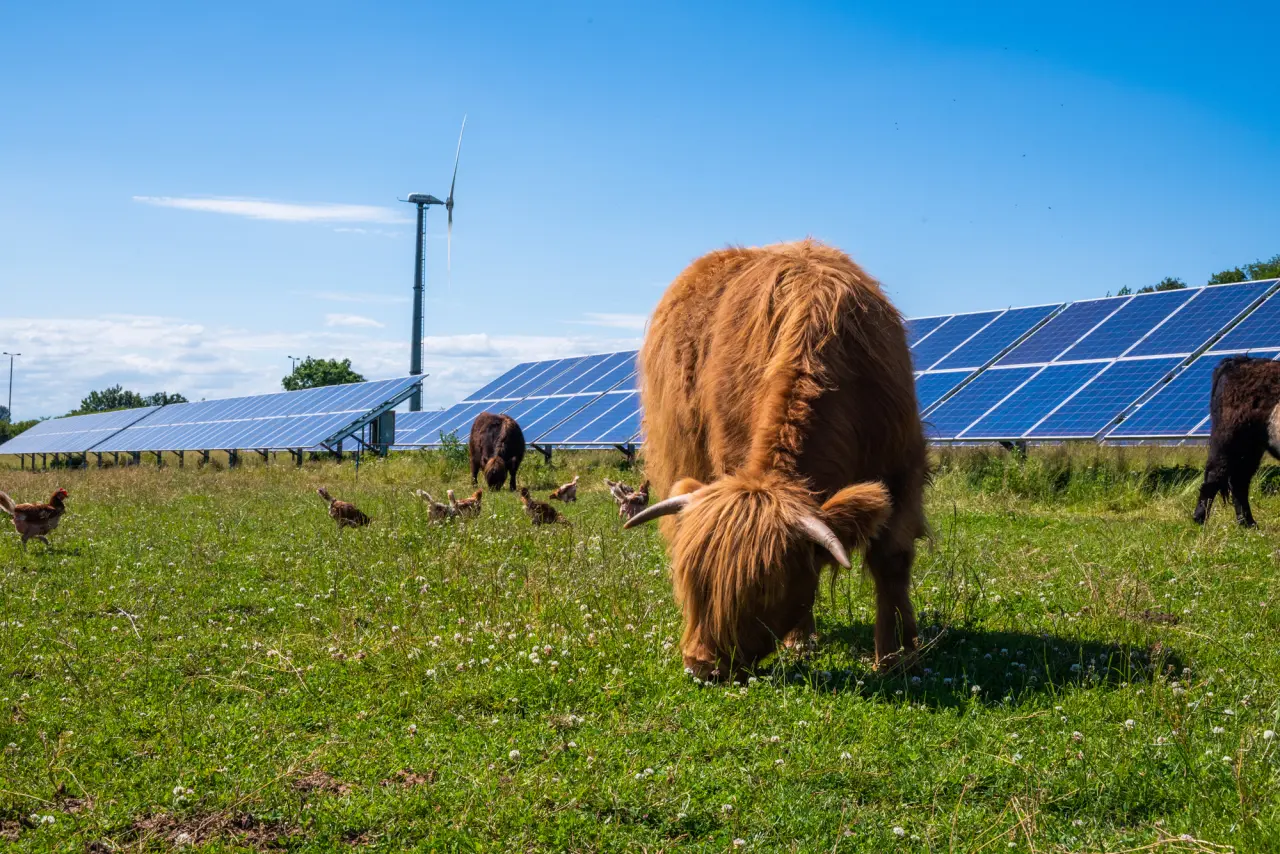8 business opportunities in renewable energy


Renewable energy is rising, which means a growing market full of new opportunities for businesses to thrive. The global renewable energy market was worth an estimated $1.21 trillion in 2023, and the sector is projected to grow by 17.2% annually from 2024 to 2030 — with solar, wind, and bioenergy accounting for much of this growth.
Another indicator of renewable energy’s growth and opportunity is in the job market. The Department of Energy reported that American jobs in clean energy grew in every single state in the year 2022. The same report predicts that the economy will keep adding jobs with continued investment and demand for clean energy in the U.S.
The following eight options offer investors, professionals, and entrepreneurs a chance to take advantage of this unprecedented growth in the energy sector and capitalize on a sustainable future.
Solar installation
The International Energy Agency (IEA) predicts that solar photovoltaic (PV) power will overtake coal and natural gas in total energy production capacity by 2027. As panels become more cost-effective and widely available, solar PV will be a viable energy option for residential, commercial, and industrial customers.
As the sector grows, so does the demand for installation services. Becoming a solar panel contractor is one business opportunity, as is becoming a consultant to connect buyers with the most reliable solar power products and services.
The solar industry extends far beyond rooftop solar panels for residential customers. Increasingly, businesses are adopting roof-mounted or ground-mounted solar arrays for power production. These facilities may power the business itself, or they may be designed for selling electricity to the regional grid. So, building a commercial solar power plant is another possible avenue for business.
Agrivoltaics
Agrivoltaics describes the practice of using land for two purposes: agriculture and solar power generation. Utility-scale solar arrays require large plots of land in rural areas. With a dual-use approach in agrivoltaics, the panels won’t infringe on agricultural space. Instead, experts design landscape-integrated solar arrays so that the land can still be used to grow crops or support livestock grazing.
Agrivoltaics can help meet increasing energy needs while also dealing with the demand for food. According to the American Farmland Trust, food production will need to increase by 60% by 2050 to meet the needs of American consumers.
In addition to the business opportunities in solar plant design, agrivoltaics offers farmers, landowners, and investors options to diversify their assets and add value to their properties through solar power production.

BESS design
A battery energy storage system (BESS) offers utility-scale power reserves and is an important aspect of renewable energy. With optimal placement, solar panels can maximize energy output. However, the sun doesn't shine 24 hours per day. Well-designed BESS installations can store excess power and meet energy demands during non-production hours.
With the rapid growth of renewable energy, these systems will increase demand for utility projects and smaller industrial or commercial setups. The Mercator Research Institute on Global Commons and Climate Change points to a significant decrease in the cost of batteries as a reason for the increasing demand and viability of BESS installations. Investors may be able to find profitable opportunities due to the growing interest in battery storage.
Wind farm consulting
Wind power is increasingly popular. The Department of Energy reports that wind farms made up 22% of new energy capacity in 2022. During that year, the market drew $12 billion in capital and expanded to provide 125,000 jobs in total.
Wind farms can provide utility-scale power. Consulting firms in this sector can advise on turbines’ design, layout, and engineering specifications. They can help utility companies calculate yield, select storage options, and account for seasonal weather patterns and other variables.
Entrepreneurs with the right knowledge and connections can tap into the wind power market in other ways as well. For example, a staffing company might seek out qualified wind technicians or electrical engineers to work on turbines, or a firm might consult with landowners to find new leasing sites for wind farm installation.
Rainwater harvesting systems
Rainwater harvesting involves diverting water from rainfall and storing it for later use. The practice can be beneficial on both residential and commercial properties. While collecting water from gutter systems has long been popular for hobby gardeners, there is a growing interest in widespread implementation as the demand for potable water increases.
Experts expect demand for freshwater to outpace supply by 40% globally by the end of this decade. This issue could increase the usefulness of rainwater harvesting as homeowners deal with a lack of fresh water and farms, businesses, and other commercial enterprises seek alternative sources of freshwater.
Businesses offering the design and installation of harvesting systems may be in high demand in the coming years, as could support services, such as those with the knowledge to treat or filter harvested water.
Geothermal system development
Geothermal energy is a less well-known but widely available source of renewable power. It relies on the heat from the ground to generate electricity or provide direct heating and cooling to buildings. Installation of geothermal is costly, but it offers a few advantages, including the ability to run constantly regardless of weather or climate conditions.
This sector offers many opportunities. The University of Michigan’s Center for Sustainable Systems estimates that the U.S. uses only 0.7% of its available geothermal energy resources. Companies with the tools and knowledge to install such systems will be in high demand as more residential and commercial customers seek a reliable and consistent renewable energy source.
Biofertilizer manufacturing
While not directly related to renewable energy, biofertilizer manufacturing is important for the sustainability of food production.
As demand for food increases, farmers need ways to increase crop yield. Biofertilizers rely on microorganisms to naturally speed growth without compromising the health of the soil. The technique allows for more sustainable farming practices and negates the need for chemicals that lower food quality and damage soil.
Because they promote sustainability without decreasing yield, biofertilizers are becoming increasingly popular. The global biofertilizer market was $2.15 billion in 2022 and could increase to $6.83 billion by 2032, providing ample opportunity for entrepreneurs who want to develop or manufacture microbe-based fertilizers.
Environmental consulting
Environmental consultants provide insights into the management of environmental issues. These services are becoming increasingly important as governments begin to focus on environment-related regulations, and enterprises try to use developments in areas like renewable energy to decrease operating costs.
Professionals and consulting firms with knowledge of regulations and expertise in potential solutions will be in high demand in the coming years as environmental issues play a larger role in compliance and profitability for companies in all industries.
Conclusion
As the renewable energy industry continues to grow, investors and entrepreneurs will find plenty of opportunities to pursue profits and establish businesses offering solar, wind, or other environmental services.